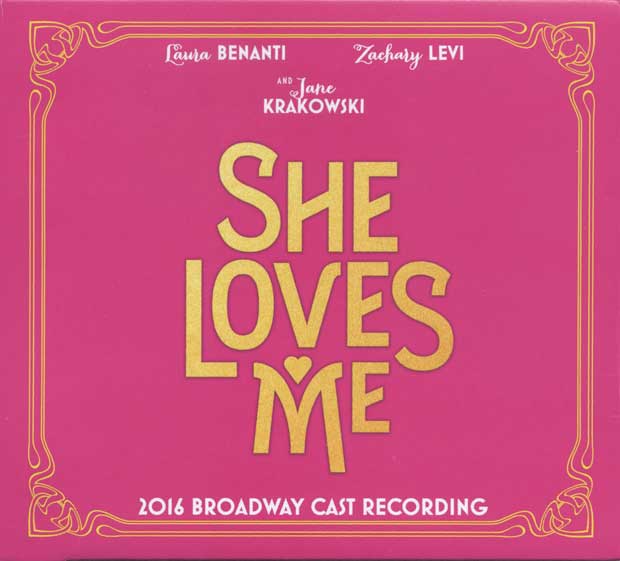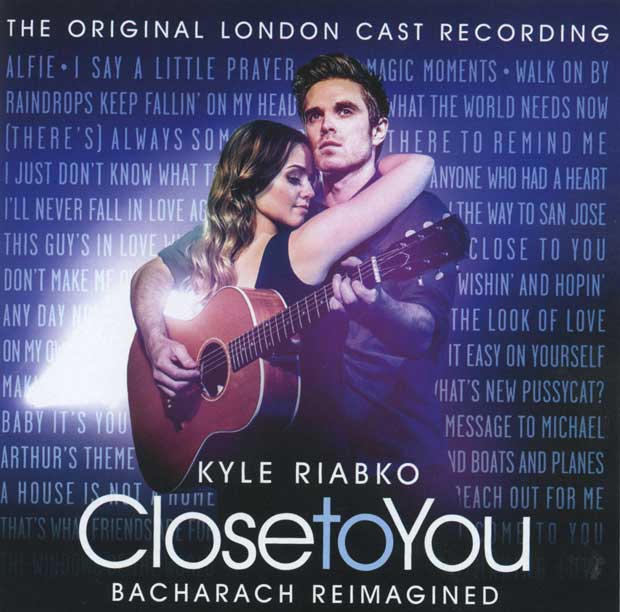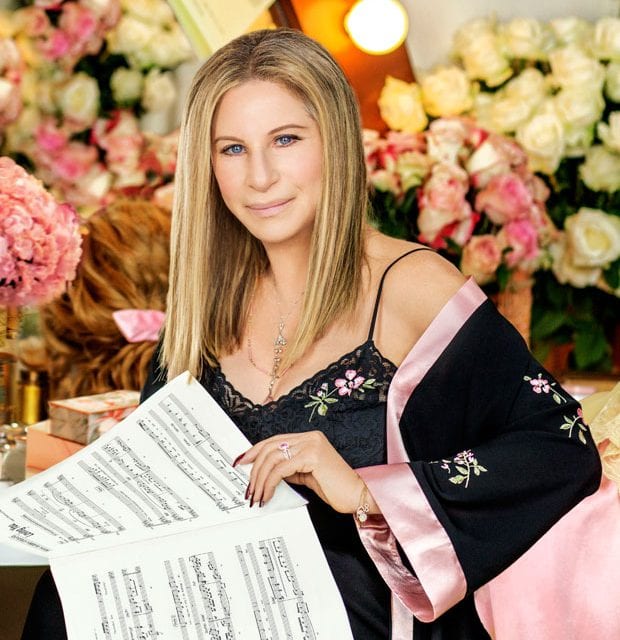Babs back on B’way. Plus: Cast albums for ‘She Loves Me,’ ‘Close to You’

ARNOLD WAYNE JONES | Executive Editor
jones@dallasvoice.com
If you’re anything like me, chances are you did a quick double-take when you looked at the lineup of singers pairing with Barbra Streisand on her latest album. Anne Hathaway? Well, she won an Oscar for a musical, OK. Ditto Jamie Foxx. And Hugh Jackman has song-and-dance man cred. But look closer: Chris Pine. Force Awakens star Daisy Ridley. Alec Baldwin. Melissa McCarthy… Melissa McCarthy??!?
Certainly all kind of voices bring different nuances to musical interpretation, but if you please: What the hell is going on here?
Encore: Movie Partners Sing Broadway, as it turns out — a daring experiment, but one that doesn’t entirely work.
Let’s face facts: Barbra Streisand’s voice was not one designed for duets. Yes, she has some famous ones with Neil Diamond and Barry Gibb and even Frank Sinatra. But that was before she became La Streisand, before the notorious perfectionist became so legendary she suggests a form of untouchability. It’s where Sinatra was, actually, when she guested on his album of duets. Now she’s the big dog, and one known for her tightly-wound arrangements and grand, dramatic flourishes. How will she pair with lesser mortals?
The results vary song-to-song. The album kicks off with a singular trio: The playlet-set-to-music “At the Ballet” from Marvin Hamlisch’s A Chorus Line. Streisand doesn’t just sing the lyric, she plays the part of Sheila, the ageing hoofer recounting how she got involved in dance due to a troubled childhood. There’s dialogue and interaction between her and co-stars Hathaway and Ridley (both of whom acquit themselves quite nicely), but it strikes a bit of a false note: Babs’ phrasing are arch and operatic. The three don’t mesh.
And the “duet” with Anthony Newley — who died nearly 20 years ago — is more feat of engineering than orchestration, clumsily shoehorning in an old version of Newley singing his own “Who Can I Turn To (When Nobody Needs Me)” from The Roar of the Greasepaint — The Smell of the Crowd with Barbra’s new interpretation. It’s very awkward.
But her unlikeliest singing partners actually draw out her playful side. “The Best Thing That Has Ever Happened” from Sondheim’s rockiest musical, Road Show, is a swingy, fun, romantic duet with Alec Baldwin — perhaps her best song partner, because his voice isn’t overly trained. Irving Berlin’s “Anything You Can Do” is a classic patter song, which McCarthy, all brash energy, dispatches on pitch, which is all that’s really called for.
Blindly devoted Barbra fans will love the chance to hear a coulda-woulda-shoulda of her missed Broadway opportunities — a sort of follow-up to The Broadway Album. But will she win new converts with it? Not unless Antonio Banderas and Seth McFarlane have legions of fans waiting to see what they’ll do next musically. And I kinda doubt that.
She Loves Me 2016 Broadway Cast Recording
 The plot of She Loves Me has been around for the lion’s share of a century — first as a play called Parfumerie, then the Ernst Lubitsch movie comedy The Shop Around the Corner, updated musically by MGM as In the Good Old Summertime and modernized for the Internet age in the saccharine comedy You’ve Got Mail. I’m not sure why this structure has such staying power, especially considering how twee and unlikely the central conceit is: A man (Georg) and a woman (Amalia) — both single and who both know each other — belong to a lonelyhearts club and correspond anonymously with each other, never realizing that the other was there all along!
The plot of She Loves Me has been around for the lion’s share of a century — first as a play called Parfumerie, then the Ernst Lubitsch movie comedy The Shop Around the Corner, updated musically by MGM as In the Good Old Summertime and modernized for the Internet age in the saccharine comedy You’ve Got Mail. I’m not sure why this structure has such staying power, especially considering how twee and unlikely the central conceit is: A man (Georg) and a woman (Amalia) — both single and who both know each other — belong to a lonelyhearts club and correspond anonymously with each other, never realizing that the other was there all along!
Wha…?!?!
Even in the age of Grindr, aliases, no faces, missed opportunities and amorous entanglements seem unlikely. It seems so juvenile and emotionally stunted. For it to work at all, you just have to swallow it and dive head-first into the farcical unlikeliness of it all.
That’s what the recent Broadway revival of this 1963 musical by Bock and Harnick — sandwiched between the team’s two masterpieces, 1959’s Fiorello! and 1964’s Fiddler on the Roof — does, embracing rather than mocking the overt silliness. That’s all it can do, really. It’s a sunny, sincere score filled with gooey ballads, simple lyrics and flat emotions.
Sometimes that works (it is musical theater, after all). The patter song “Tonight at Eight,” where the man (Zachary Levi) swoons over his first date that evening works outside the universe of the story: Many an audition has been tackled via its 100 seconds of exuberance. “Will He Like Me?” captures a universal sense of self-doubt and longing that also transcends the format and works as a cabaret number.
The production values on this cast recording, including the voices, are all fine, but, like the musical itself, nothing stands out. This is one of those so-called classics more honored for its longevity than for its relevance. Only die-hard theater queens will be swayed.
Close to You: Bacharach Reimagined Original London Cast Recording
 Ever since Mamma Mia, the single-source jukebox musical has become a staple of modern theater. Oh, they have existed before — plenty of revues of Sondheim, for instance — but most have been straight-up concert shows of songs always intended for the musical theater. Turning pop into Broadway is comparatively new… and not always successful.
Ever since Mamma Mia, the single-source jukebox musical has become a staple of modern theater. Oh, they have existed before — plenty of revues of Sondheim, for instance — but most have been straight-up concert shows of songs always intended for the musical theater. Turning pop into Broadway is comparatively new… and not always successful.
I get why producers do it. You need an anchor to bring in audiences, and familiarity seems like a marketing dream: You don’t have to sell the concept, just the songs. Sometimes, the trick is shoehorning a plot around an existing setlist; sometimes it’s about arranging the songs for theater consumption.
That appears to be the concept behind Close to You, a London-originated musical devised by Kyle Riabko and set to the songs of the ’60s composer Burt Bacharach — Bacharach Reimagined, the subtitle promises. So I guess my question is: Did Burt really need to be reimagined?
The third number on this album — a mashup of “The Look of Love,” “I Say a Little Prayer” and “Arthur’s Theme” — proves the danger of trying too hard: The tempo of “I Say a Little Prayer” is almost dirge-like, instead of the effervescent champagne of a song Dionne Warwick turned it into. Yes, there’s an R&B undercurrent with gospel-like harmonies, but half the fun of the song is its speed. The arrangement is the song.
That happens on a few other key numbers from the show. But ultimately, it’s the appeal of Bacharach’s music itself — somehow still fully a product of the 1960s, yet as catchy as a summer cold — that fuels this musical. The catalogue that Bacharach created, often with lyricist Hal David, didn’t really need to be fiddled with. But the structure is there, on display, both durable and unforgettable.
This article appeared in the Dallas Voice print edition August 26, 2016.














